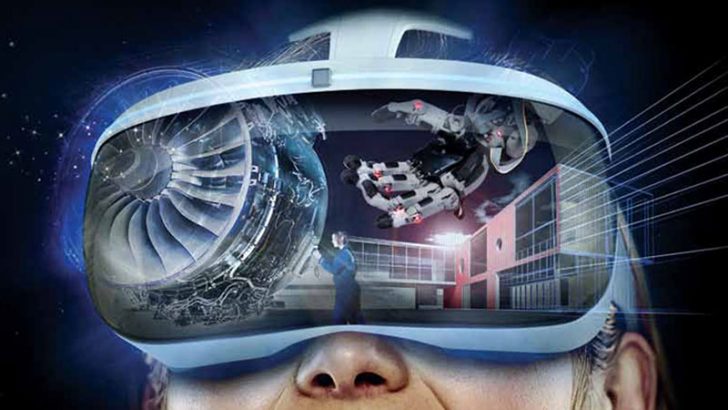

Invest Bristol & Bath (IBB) has released a report titled Work, Rest & Play, subtitled ‘A report on how virtual reality will impact everyday lives.’ At the heart of the report is a survey commissioned by IBB talking to 2,000 people about their perceptions of VR. The report and survey make for interesting reading not least that they finally show that the vision from the 1980’s of what VR could deliver is finally being realised as technology catches up.
According to Rick Chapman, high tech sector specialist at Invest Bristol & Bath: “Without doubt, some of the more intriguing and leading edge applications of VR are to be found in industry. Training simulations in particular will drive interest across business sectors. The use of VR in fixed rather than mobile environments, where you’re not reliant on carrying a VR headset around with you, present exciting opportunities – from enhanced learning and training experiences through to informed buying decisions and immersive entertainment.”
Back to the future
The idea of using VR for training in industry goes back to the 1980’s. Some of the early projects saw machines developed to help surgeons train for operations but they were expensive and the graphics were limited by the CPUs and languages used. There were also systems for architects so that they could design not just buildings but industrial sites such as oil rigs and then walk around them to see if they were really workable.
Another industry that has used variants of VR is automotive. One of the important uses here has been to reduce the cost of physical development. For example, where do you put the wing mirror on a high performance car and keep it stylish? From the outside there are a lot of possibilities but it is only when in the drivers seat that the effectiveness of the mirror can be seen. That means spend millions on building a prototype or just take the design from the CAD system and create a virtual environment where you can sit in the vehicle.
Sega in the 1980’s and Nintendo in the 1990’s both tried to make goggles and games that would work but struggled with the technology. When VR games were first released into arcades designers quickly learned about motion sickness and its impact on users.
So why does IBB believe that things are now changing around from what has gone before to a future where consumer and business will re-engage with the technology?
Lower costs and inclusivity

As with the automotive example above, VR has the potential to significantly slash costs for some industries. It can also improve safety such as enabling surgeons to practice their skills or plan a complex operation before a patient is cut open. In addition, there is the ability to be all inclusive. Technology has lowered the barriers to the workplace but VR has the ability to go further.
Liz Falconer, Professor of Technology Enhanced Learning at the University of the West of England in Bristol, who wrote the foreword for the report, says: “The opportunities to learn safely from simulations in virtual environments before trying things out in the physical world; opportunities for people with disabilities to take part in activities and social events that would be restricted in the physical world; opportunities for people from different countries, religions and cultures to meet regularly and share experiences and understanding without having to travel to do so – all this, and more, makes me confident and excited about the future of VR.”
Where will we see VR impacting life and work?
In the survey that IBB commissioned there is no surprise that video games and entertainment were the top responses to “Which of these market do you think Virtual Reality will have the most impact on?” Similarly when asked “Which area of your life do you think Virtual Reality will have the most impact on?” entertainment came out top again.
Refreshingly education scored high on both while training was also expected to have an impact on life. Disappointingly work failed to get much of a vote. This was also reflected in impacts on other markets. While healthcare, travel, defence and property were all listed that may have only been because they were listed as possible responses.
High revenues but the price must be right
In the IBB report it quotes analyst firm Statista who believes that the VR market will be worth $4.6 billion by 2017. That’s a significant sum of money that will need to be backed by more than just a few computer games. To reach that sort of figure applications will need to not only be developed for VR systems but companies will also have to look at their own in-house development teams and attract people with the right coding and design skills.
For companies to get started, however, they do not want to go through a huge capital outlay. The introduction of cloud technology has already changed their view on CAPEX, especially in IT terms. At the same time, consumers are already buying into VR systems so extending the existing Bring Your Own Device (BYOD) to Bring Your Own VR (BYOVR) makes sense. But for that to happen the industry has to get the price right.
Respondents to the survey also highlighted that the sweet spot in terms of cost was up to £300 per device. After that numbers the will to invest fell off substantially. Over time and as new entrants continue to arrive the likelihood is that this price point will continue to fall as we’ve seen with other technology.
It would have been interesting to see exactly what price point businesses thought was appropriate and where they saw the most value. The failure of the survey to address this is disappointing but the report does a good job of looking at several industries and where they are already beginning to utilise VR as well as its future as an enabling technology.
Conclusion
While the primary purpose of the report is to focus attention on what IBB can offer companies looking to invest in VR, there is much more to be gained from reading the report and the survey. It should appeal to consumers looking at why they should be buying VR for more than the cool factor and for businesses interested in understanding the impact on their industry. There is a lot of useful data in the depths of the report not least the comments from well-known companies such as Aardman Animations, BMT Defence Services and Opposable Games.
For those of us who have followed VR for over 30 years this report and the state of VR is good news. As with many technologies there have been a number of previous attempts to create ‘the year of VR’. This report stops short of that but the picture it paints is of a technology that finally has everything it needs in order to deliver on the promises it has previously made.
For CIOs the key questions that this report doesn’t quite answer is “when will the applications for my business become available?” and “where is my next workforce coming from?”



























[…] Invest in Bristol & Bath has issued a report looking at the potential for Virtual Reality for both consumers and businesses. […]